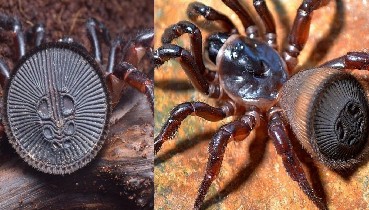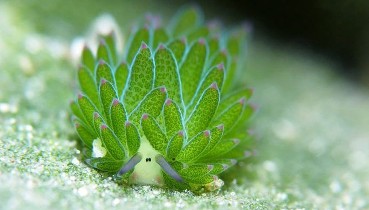

Giant Bubble Discovered By Divers Incubates a Plethora of New Life
Just off the western coast of Norway, three divers had a close encounter with a drifting gelatinous sphere as big as an adult human.
 Ronald Raasch, a diver working on the Norwegian research vessel REV Ocean, recently released a video showing a diver slowly circling a spherical blob surrounded by a transparent membrane containing a dark mass suspended inside. As the diver swam around the blob, his flashlight lit up its interior. Inside were numerous tiny spheres – eggs holding baby squid, estimated to number in the hundreds of thousands.
Ronald Raasch, a diver working on the Norwegian research vessel REV Ocean, recently released a video showing a diver slowly circling a spherical blob surrounded by a transparent membrane containing a dark mass suspended inside. As the diver swam around the blob, his flashlight lit up its interior. Inside were numerous tiny spheres – eggs holding baby squid, estimated to number in the hundreds of thousands.The divers spotted the egg mass during a visit to a submerged World War II shipwreck in Ørstafjorden, Norway, located about 650 feet (200 meters) from the coast. They were swimming back to shore at a depth of 55 feet (17 m) when they saw the huge “bubble” drifting by.
The phenomenon is referred to by Raasch as the “blekksprutgeleball” — “squid gel ball” in Norwegian. Dozens of similar balls have been sighted in waters near Norway, Spain, France and Italy, with reports dating back 30 years, said Halldis Ringvold, a researcher with Sea Snack Norway and the project leader for “Huge Spheres,” an effort to examine the spherical sacs.
Scientists have been perplexed by these spheres that are so delicate that they are difficult to approach and sample for testing. Divers had reported spotting them along the Mediterranean and Norwegian coasts in 2017, and DNA analysis of samples from four spheres recently confirmed that they were egg sacs belonging to the southern shortfin squid (Illex coindetii), a 10-armed cephalopod found on both sides of the Atlantic Ocean.
“The dark mass is probably ink from the female squid, who injected it while making the sphere,” Halldis Ringvold, project leader for “Huge Spheres,” an investigation of the spherical sacs, said. “At the very end of the video, it is possible to see the actual squid eggs. They are very small, round and transparent.”
The shortfin squid is part of the group Oegopsida, which is known to produce large, spherical egg sacs, as seen in the above video. For some species in this group, however, evidence of their egg masses is yet to be found. Researchers with the Huge Spheres project are thus collecting photos and videos of sphere sightings, as well as tissue samples, to learn more about these elusive animals.

The makers of the video, Raasch and his team have reported on the egg sacs in the past as part of a volunteer effort.
“For two years (2017-2019) we have gathered around 80 observations of large gelatinous spheres. The oldest [is] about 30 years old, and the youngest a few weeks,” wrote members of the Gelatinous Sphere Project in a statement.
The team reported 27 “large, gelatinous spherical masses” observed in European waters across the continent, from Norway and Sweden to Croatia and Italy between 2001 and 2017.
“Individual spheres measured 0.3–2 m in diameter, averaging one meter, with all but four sighted in suspension in the water column between 0.5 and 52 m depth, in water temperatures ranging between 10–21 degrees Celsius,” the authors reported.
We are definitely finding out more and more about the mysterious “bubbles” of the deep. We just never should swim too close to them.
Recommended Videos
 Incredible Moment Flock Of Starlings Form Giant Bird Over a Lake12795 views
Incredible Moment Flock Of Starlings Form Giant Bird Over a Lake12795 views Rainbow Obsidian: Iridescent Obsidian111 views
Rainbow Obsidian: Iridescent Obsidian111 views-
Advertisements
 Great Cormorants at sunrise38 views
Great Cormorants at sunrise38 views 19 Ancient Fossils That Will Make People Say ‘Whoa’188 views
19 Ancient Fossils That Will Make People Say ‘Whoa’188 views Chinese Hourglass Spider (Cyclocosmia ricketti)1995 views
Chinese Hourglass Spider (Cyclocosmia ricketti)1995 views 16 Beautiful but Deadly Frogs786 views
16 Beautiful but Deadly Frogs786 views 120 Interesting Photos Of Freezing Winter That Show What True Cold Looks Like4904 views
120 Interesting Photos Of Freezing Winter That Show What True Cold Looks Like4904 views Photographer Captured Bees Sleeping In Flower And It’s As Cute As It Sounds22 views
Photographer Captured Bees Sleeping In Flower And It’s As Cute As It Sounds22 views



